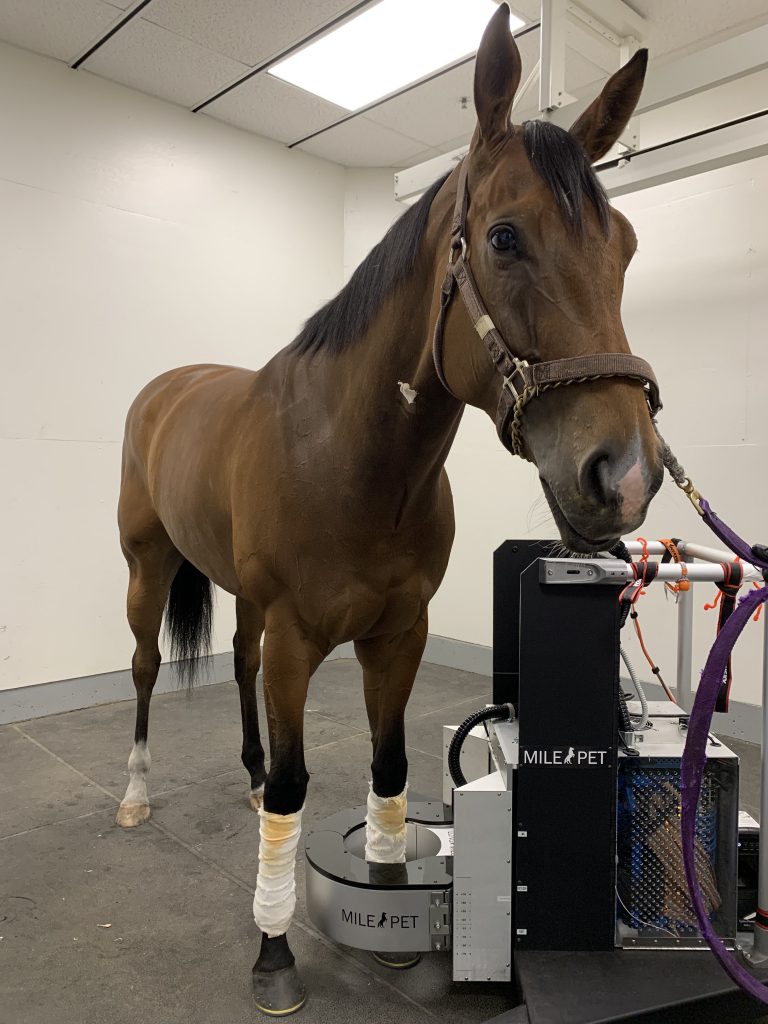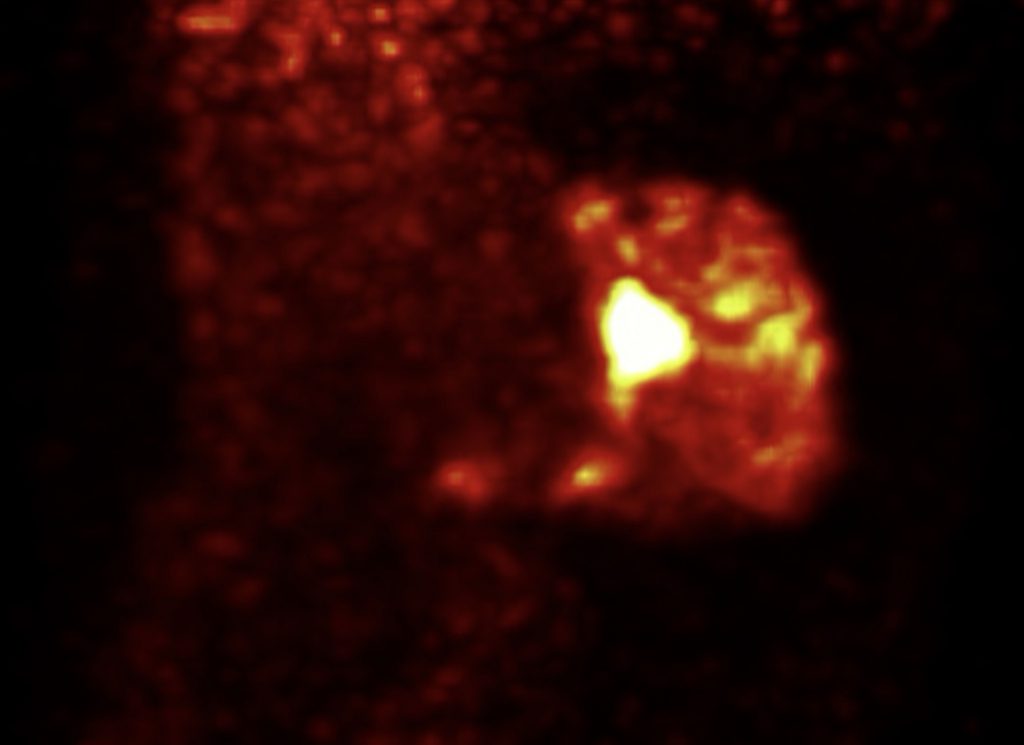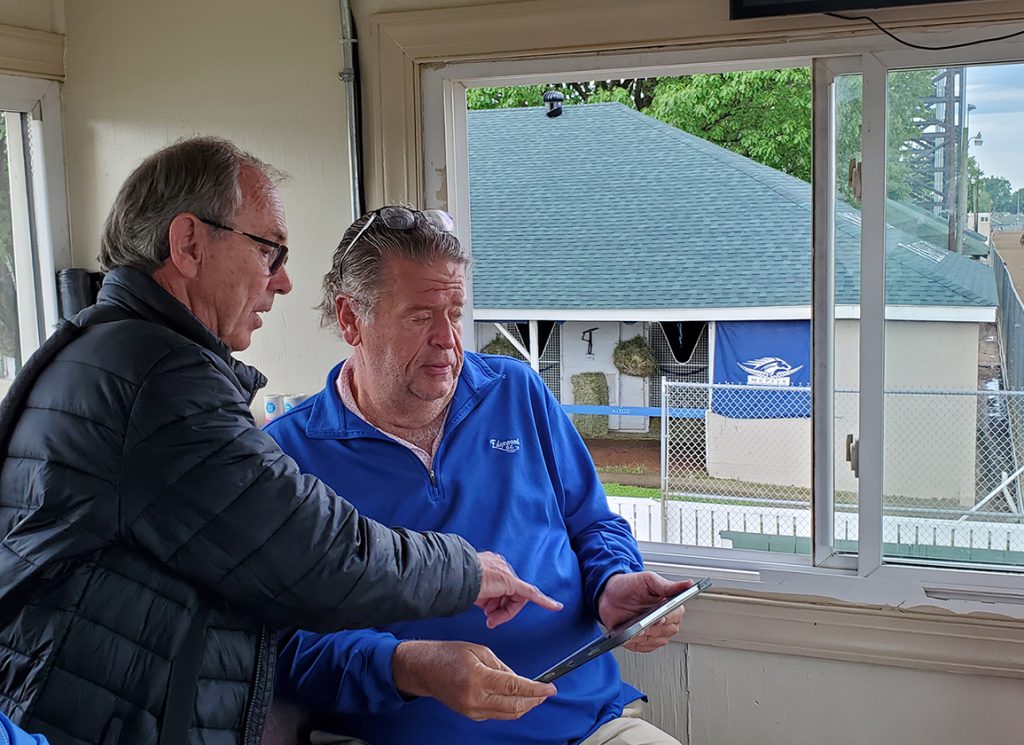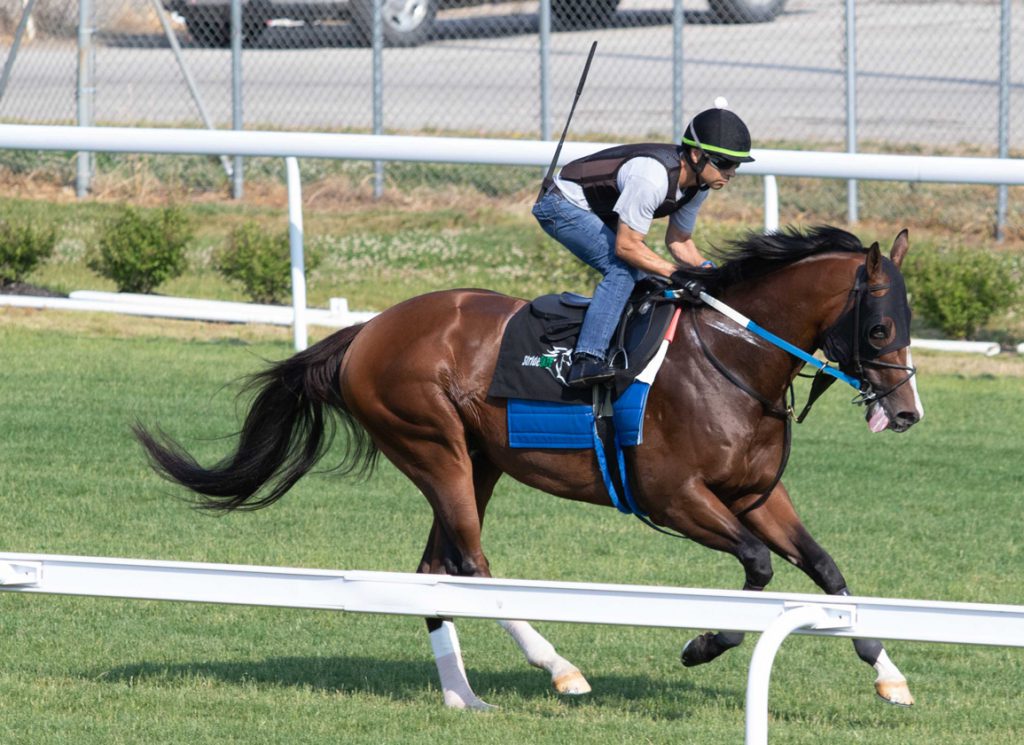Every week, the TDN publishes a roundup of key official rulings from the primary tracks within the four major racing jurisdictions of California, New York, Florida and Kentucky.
Here's a primer on how each of these jurisdictions adjudicates different offenses, what they make public (or not) and where.
The TDN also posts a roundup of the relevant Horseracing Integrity and Safety Act (HISA) related rulings from the same week. These include decisions from around the country.
California
Track: Los Alamitos
Date: 09/15/2023
Licensee: Kent Desormeaux, jockey
Penalty: Three-day suspension
Violation: Careless riding
Explainer: Having received notice from the California Horse Racing Board that the appeal of DMTD Ruling #16 (August 3, 2023) has been withdrawn, the original ruling is reinstated. Jockey Kent Desormeaux is suspended for 3 racing days (September 29, 30, and October 1, 2023).
Track: Los Alamitos
Date: 09/15/2023
Licensee: Antonio Fresu, jockey
Penalty: one-day suspension
Violation: Participating in more designated than permitted
Explainer: Jockey Antonio Fresu is suspended for 1 additional suspension day (October 15, 2023) pursuant to California Horse Racing Board rule #1766 (Designated Races – participated in more than one designated race on September 10, 2023).
Track: Los Alamitos
Date: 09/17/2023
Licensee: Armando Aguilar, apprentice jockey
Penalty: Three-day suspension
Violation: Failure to ride mount to the finish
Explainer: Apprentice Jockey Armando Aguilar, who rode Finneus in the ninth race at Los Alamitos Race Course on September 16, 2023, is suspended for 3 racing days (September 30, October 1 & 6, 2023) for violation of California Horse Racing Board rule #1692 (Requirements for Horse, Trainer and Jockey – failure to ride his mount to the finish, costing him a better finish position).
Florida
The following was taken from the ARCI's “recent rulings” webpage.
Track: Gulfstream Park
Date: 09/7/2023
Licensee: Padarath Lutchman, trainer
Penalty: Fifteen-day suspension, $500 fine
Violation: Medication violation
Explainer: Steward's FO # 2023-031317 – F.S. 550.2415 Violation = Clenbuterol. “CORPORATE AFFAIR”
New York
Track: Saratoga
Date: 09/15/2023
Licensee: Robert MacLennan, racing official
Penalty: $2,000 fine
Violation: According to NYRA spokesperson, Pat McKenna, “an inadvertent administrative error during the claims process on September 1 resulted in voided claims.”
Explainer: Racing Official Mr. Robert MacLennan is hereby fined the sum of $2,000 for failing to tend to business in a professional manner necessitating claims to be voided.
Track: Saratoga
Date: 09/17/2023
Licensee: Katherine Davis, jockey
Penalty: Seven-day suspension
Violation: Careless riding
Explainer: For having waived her right to an appeal Jockey Katherine Davis is hereby suspended 7 NYRA racing days inclusive, starting opening day of the Saratoga Race Meet 2024. This for careless riding during the running of the 6th race at Saratoga Racecourse on September 2nd 2023.
NEW HISA/HIWU STEWARDS RULINGS
The following rulings were reported on HISA's “rulings” portal and through the Horseracing Integrity & Welfare Unit's “pending” and “resolved” cases portals.
This does not include the voided claim rulings which were sent to the TDN directly. Some of these rulings are from prior weeks as they were not reported contemporaneously.
One important note: HISA's whip use limit is restricted to six strikes during a race.
Violations of Crop Rule
Los Alamitos
Adrian Escobedo – violation date Sept 16; $250 fine and one-day suspension, 7 strikes
Hector Berrios – violation date Sept 16; $250 fine and one-day suspension, 7 strikes
Pending ADMC Violations
Date: 08/28/2023
Licensee: Michael Pappada, trainer
Penalty: Provisionally suspended
Alleged Violation: Medication violation
Explainer: For the presence of Altrenogest—a banned substance—in a sample taken from Runaway Harry, who won at Presque Isle Downs on 8/28/23. This is a possible violation of Rule 3212—Presence of a Banned Substance and/or its Metabolites or Markers (Post-Race/Vets' List).
Date: 08/23/2023
Licensee: Dan Blacker, trainer
Penalty: Pending
Alleged Violation: Medication violation
Explainer: For the presence of Acepromazine—Controlled Medications (Class B)—in a sample taken from Miss O'Brien. This is a possible violation of Rule 3312—Presence of Controlled Medication Substance and/or its Metabolites or Markers (Post-Race/Vets' List).
Date: 08/20/2023
Licensee: Totaram Rampersaud, trainer
Penalty: Pending
Alleged Violation: Medication violation
Explainer: For the presence of Phenylbutazone—Controlled Medications (Class C)—in a sample taken from Jumpster. This is a possible violation of Rule 3312—Presence of Controlled Medication Substance and/or its Metabolites or Markers (Post-Race/Vets' List).
Date: 08/16/2023
Licensee: Robert Leaf Jr., trainer
Penalty: Pending
Alleged Violation: Medication violation
Explainer: For the presence of Phenylbutazone—Controlled Medications (Class C)—in a sample taken from Laddie Dance, who won at Delaware Park on 8/16/23. This is a possible violation of Rule 3312—Presence of Controlled Medication Substance and/or its Metabolites or Markers (Post-Race/Vets' List).
Date: 08/16/2023
Licensee: R. McLane Hendricks, trainer
Penalty: Provisionally suspended
Alleged Violation: Medication violation
Explainer: For the presence of Cocaine—a banned substance—in a sample taken from Princess Javoncia, who won at Penn National on 8/16/23. This is a possible violation of Rule 3212—Presence of a Banned Substance and/or its Metabolites or Markers.
Date: 08/14/2023
Licensee: Michael Matz, trainer
Penalty: Pending
Alleged Violation: Medication violation
Explainer: A possible violation of Rule 3314—Use or Attempted Use of a Controlled Medication Substance or a Controlled Medication Method—on the horse, Late Frost. This is also a possible violation of Rule 4222—Intra-Articular Injections Within Seven (7) Days of Timed and Reported Workout.
Date: 08/12/2023
Licensee: Joe Toye, trainer
Penalty: Pending
Alleged Violation: Medication violation
Explainer: For the presence of Dexamethasone—Controlled Medication (Class C)—in a sample taken from Glimpse of Gold, who won at Emerald Downs on 8/12/23. This is a possible violation of Rule 3312—Presence of a Controlled Medication Substance and/or its Metabolites or Markers (Post-Race/Vets' List Workout).
Date: 08/12/2023
Licensee: Faustino Patino Lopez, trainer
Penalty: Pending
Alleged Violation: Medication violation
Explainer: For the presence of Dexamethasone—Controlled Medication (Class C)—in a sample taken from Night to Remember, who finished third at Emerald Downs on 8/12/23. This is a possible violation of Rule 3312—Presence of a Controlled Medication Substance and/or its Metabolites or Markers (Post-Race/Vets' List Workout).
Date: 08/12/2023
Licensee: Leslye Bouchard, trainer
Penalty: Pending
Alleged Violation: Medication violation
Explainer: A possible violation of Rule 3314—Use or Attempted Use of a Controlled Medication Substance or a Controlled Medication Method—on the horse, Tomarie. This is also a possible violation of Rule 4222—Intra-Articular Injections Within Seven (7) Days of Timed and Reported Workout.
Date: 07/28/2023
Licensee: John Pimental, trainer
Penalty: Provisionally suspended
Alleged Violation: Medication violation
Explainer: For the possible presence or possession of Levothyroxine, a banned substance. This is a possible violation of Rule 3214 (a)—Presence of a Banned Substance or a Banned Method.
Date: 07/18/2023
Licensee: Jason DaCosta, trainer
Penalty: Pending
Alleged Violation: Medication violation
Explainer: For the presence of Gabapentin—Controlled Medications (Class B)—in a sample taken from Poker Partner, who won at Presque Isle Downs on 7/18/23. This is a possible violation of Rule 3312—Presence of Controlled Medication Substance and/or its Metabolites or Markers (Post-Race/Vets' List).
Date: 07/18/2023
Licensee: Jeffrey Englehart, trainer
Penalty: Pending
Alleged Violation: Medication violation
Explainer: For the presence of Methocarbamol—Controlled Medication (Class C)—in a sample taken from Mi Tres Por Ciento. This is a possible violation of Rule 3312—Presence of Controlled Medication Substance and/or its Metabolites or Markers.
Date: 07/17/2023
Licensee: Jeffrey Englehart, trainer
Penalty: Pending
Alleged Violation: Medication violation
Explainer: For the presence of Phenylbutazone—Controlled Medication (Class C)—in a sample taken from Graywing, who finished fourth at Finger Lakes on 7/17/23. This is a possible violation of Rule 3312—Presence of Controlled Medication Substance and/or its Metabolites or Markers.
Resolved ADMC Violations
Date: 08/06/2023
Licensee: Cesar De Alba, trainer
Penalty: Disqualification of the Covered Horse's race results, including forfeiture of all purses and other compensation, prizes, trophies, points, and rankings and repayment or surrender (as applicable); a fine of $500; imposition of 1.5 Penalty Points.
Explainer: For the presence of Dexamethasone—Controlled Medication (Class C)—in a sample taken from Scary Fast Smile, who finished seventh at Del Mar on 8/6/23. This is a possible violation of Rule 3312—Presence of a Controlled Medication Substance and/or its Metabolites or Markers (Post-Race/Vets' List Workout).
Date: 08/06/2023
Licensee: Antonio Arriaga, trainer
Penalty: A fine of $500; imposition of 1.5 Penalty Points.
Explainer: For the presence of Phenylbutazone—Controlled Medications (Class C)—in a sample taken from Jet Set Juliet. This is a possible violation of Rule 3312—Presence of Controlled Medication Substance and/or its Metabolites or Markers (Post-Race/Vets' List).
Date: 08/05/2023
Licensee: Boyd Caster, trainer
Penalty: A fine of $1,500; imposition of 1.5 Penalty Points.
Explainer: A possible violation of Rule 3314—Use or Attempted Use of a Controlled Medication Substance or a Controlled Medication Method—on the horse, Inside Job. This is also a possible violation of Rule 4222—Intra-Articular Injections Within Seven (7) Days of Timed and Reported Workout.
Date: 08/05/2023
Licensee: Boyd Caster, trainer
Penalty: A fine of $1,500; imposition of 1.5 Penalty Points.
Explainer: A possible violation of Rule 3314—Use or Attempted Use of a Controlled Medication Substance or a Controlled Medication Method—on the horse, Dixieland Quality. This is also a possible violation of Rule 4222—Intra-Articular Injections Within Seven (7) Days of Timed and Reported Workout.
Date: 08/04/2023
Licensee: Devarus Douglass, trainer
Penalty: A fine of $500; imposition of 1.5 Penalty Points.
Explainer: For the presence of Phenylbutazone—Controlled Medications (Class C)—in a sample taken from Pickle Feet. This is a possible violation of Rule 3312—Presence of Controlled Medication Substance and/or its Metabolites or Markers (Post-Race/Vets' List).
Date: 08/03/2023
Licensee: David Mohan, trainer
Penalty: A fine of $500; imposition of 1.5 Penalty Points.
Explainer: For the presence of Methocarbamol—Controlled Medication (Class C)—in a sample taken from Shoot Themessenger. This is a possible violation of Rule 3312—Presence of Controlled Medication Substance and/or its Metabolites or Markers (Post-Race/Vets' List).
Date: 08/03/2023
Licensee: Jorge Maravilla, trainer
Penalty: Disqualification of the Covered Horse's race results, including forfeiture of all purses and other compensation, prizes, trophies, points, and rankings and repayment or surrender (as applicable); a fine of $500; imposition of 1.5 Penalty Points.
Explainer: For the presence of Phenylbutazone—Controlled Medications (Class C)—in a sample taken from Brookys Tapit, who finished fifth at Santa Rosa on 8/3/23. This is a possible violation of Rule 3312—Presence of Controlled Medication Substance and/or its Metabolites or Markers (Post-Race/Vets' List).
Date: 07/14/2023
Licensee: Carla Gaines, trainer
Penalty: 7-day period of Ineligibility, beginning on September 16, 2023; a fine of $1,000; imposition of 2 Penalty Points.
Explainer: For the presence of Acepromazine—Controlled Medications (Class B)—in a sample taken from Summer Lake. This is a possible violation of Rule 3312— Presence of Controlled Medication Substance and/or its Metabolites or Markers (Post-Race/Vets' List).
Date: 07/04/2023
Licensee: Lorenzo Ruiz, trainer
Penalty: 18-month period of Ineligibility, beginning on September 18, 2026; 60-day period of Ineligibility for Covered Horse beginning on August 3, 2023; Disqualification of the Covered Horse's race results, including forfeiture of all purses and other compensation, prizes, trophies, points, and rankings and repayment or surrender (as applicable); a fine of $12,500.
Explainer: For the presence of Diisopropylamine—a banned substance—in a sample taken from Kant Beat the Rock, who finished second at Los Alamitos on 7/4/23. This is a possible violation of Rule 3212—Presence of a Banned Substance and/or its Metabolites or Markers.
Date: 06/25/2023
Licensee: Brittany Russell, trainer
Penalty: A fine of $500; imposition of 1.5 Penalty Points.
Explainer: For the presence of Dantrolene—Controlled Medications (Class C)—in a sample taken from Late Night Larry. This is a possible violation of Rule 3312— Presence of Controlled Medication Substance and/or its Metabolites or Markers (Post-Race/Vets' List).
Date: 06/25/2023
Licensee: Lorenzo Ruiz, trainer
Penalty: 18-month period of Ineligibility, beginning on March 18, 2025; 60-day period of Ineligibility for Covered Horse beginning on July 13, 2023; Disqualification of the Covered Horse's race results, including forfeiture of all purses and other compensation, prizes, trophies, points, and rankings and repayment or surrender (as applicable); a fine of $12,500.
Explainer: For the presence of Diisopropylamine—a banned substance—in a sample taken from American Cat, who finished fifth at Los Alamitos on 6/25/23. This is a possible violation of Rule 3212—Presence of a Banned Substance and/or its Metabolites or Markers (Post-Race/Vets' List).
Date: 06/23/2023
Licensee: Lorenzo Ruiz, trainer
Penalty: 18-month period of Ineligibility, beginning on September 18, 2023; 60-day period of Ineligibility for Covered Horse beginning on July 24, 2023; Disqualification of the Covered Horse's race results, including forfeiture of all purses and other compensation, prizes, trophies, points, and rankings and repayment or surrender (as applicable); a fine of $12,500.
Explainer: For the presence of Diisopropylamine—a banned substance—in a sample taken from Facts Matter, who won at Los Alamitos on 6/23/23. This is a possible violation of Rule 3212—Presence of a Banned Substance and/or its Metabolites or Markers.
Date: 06/19/2023
Licensee: Dick Clark, trainer
Penalty: 18-month period of Ineligibility for Covered Person, beginning on January 24, 2031; 60-day period of Ineligibility for Covered Horse, beginning on July 24, 2023; Disqualification of Covered Horse's Race results, including forfeiture of all purses and other compensation, prizes, trophies, points, and rankings and repayment or surrender (as applicable); a fine of $12,500.
Explainer: For the presence of Methamphetamine—a banned substance—in a sample taken from My Heart's on Fire, who won at Prairie Meadows on 6/19/23. This is a possible violation of Rule 3212—Presence of a Banned Substance and/or its Metabolites or Markers.
Date: 06/18/2023
Licensee: A Ferris Allen III, trainer
Penalty: 7-day period of Ineligibility, beginning on September 16, 2023; Disqualification of the Covered Horse's race results, including forfeiture of all purses and other compensation, prizes, trophies, points, and rankings and repayment or surrender (as applicable); a fine of $1,000; imposition of 2 Penalty Points.
Explainer: For the presence of Acepromazine—Controlled Medications (Class B)—in a sample taken from Musical Cat. This is a possible violation of Rule 3312—Presence of a Controlled Medication Substance and/or its Metabolites or Markers (Post-Race/Vets' List Workout).
Date: 06/11/2023
Licensee: Peter Miller, trainer
Penalty: Disqualification of the Covered Horse's race results, including forfeiture of all purses and other compensation, prizes, trophies, points, and rankings and repayment or surrender (as applicable).
Explainer: For the presence of Acepromazine—Controlled Medication (Class B)—in samples taken from Forgiving Spirit, who finished second at Santa Anita on 6/11/23. This is a possible violation of Rule 3312—Presence of Controlled Medication Substance and/or its Metabolites or Markers (Post-Race/Vets' List Workout).
Date: 06/04/2023
Licensee: Peter Miller, trainer
Penalty: Disqualification of the Covered Horse's race results, including forfeiture of all purses and other compensation, prizes, trophies, points, and rankings and repayment or surrender (as applicable).
Explainer: For the presence of Acepromazine—Controlled Medication (Class B)—in samples taken from Giver Not a Taker, who finished fourth at Santa Anita on 6/4/23. This is a possible violation of Rule 3312—Presence of Controlled Medication Substance and/or its Metabolites or Markers (Post-Race/Vets' List Workout).
Date: 06/04/2023
Licensee: Peter Miller, trainer
Penalty: 7-day period of Ineligibility, beginning on September 16, 2023; Disqualification of the Covered Horse's race results, including forfeiture of all purses and other compensation, prizes, trophies, points, and rankings and repayment or surrender (as applicable); a fine of $1,000; imposition of 2 Penalty Points.
Explainer: For the presence of Acepromazine—Controlled Medication (Class B)—in samples taken from Anmer Hall, who won at Santa Anita on 6/4/23. This is a possible violation of Rule 3312—Presence of Controlled Medication Substance and/or its Metabolites or Markers (Post-Race/Vets' List Workout).
Date: 05/24/2023
Licensee: Mario Dominguez
Penalty: 2-year period of Ineligibility for Covered Person, beginning on June 15, 2023; 6-month period of Ineligibility for Covered Horse, beginning on May 24, 2023; Disqualification of Covered Horse's Race results, including forfeiture of all purses and other compensation, prizes, trophies, points, and rankings and repayment or surrender (as applicable); a fine of $5,000; and payment of $10,000 in arbitration costs.
Explainer: For the presence of Cobalt Salts—a banned substance—in a sample taken from Petulant Delight, who finished seventh at Parx Racing on 5/24/23. This is a possible violation of Rule 3212—Presence of a Banned Substance and/or its Metabolites or Markers (Post-Race/Vets' List Workout).
The post Weekly Stewards and Commissions Rulings, Sept. 12-18 appeared first on TDN | Thoroughbred Daily News | Horse Racing News, Results and Video | Thoroughbred Breeding and Auctions.






